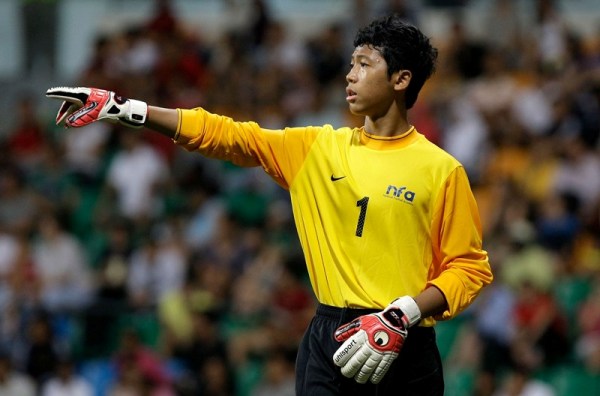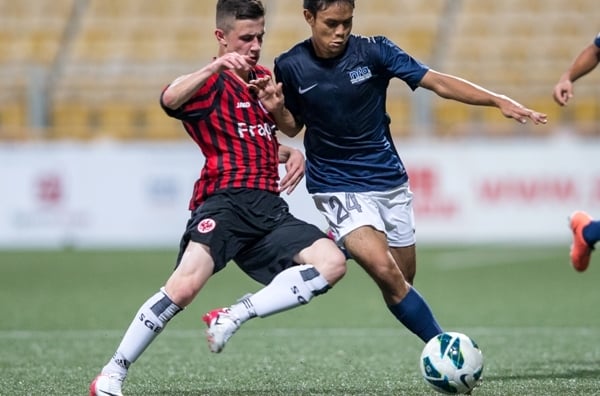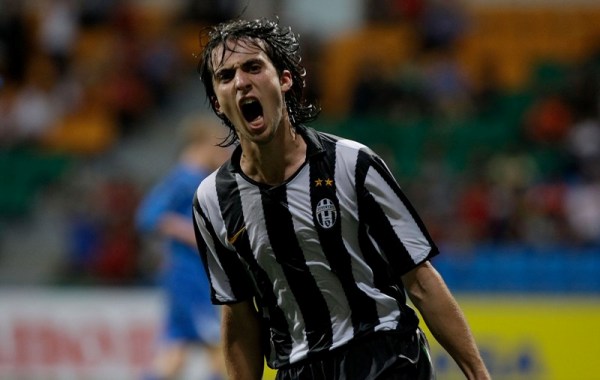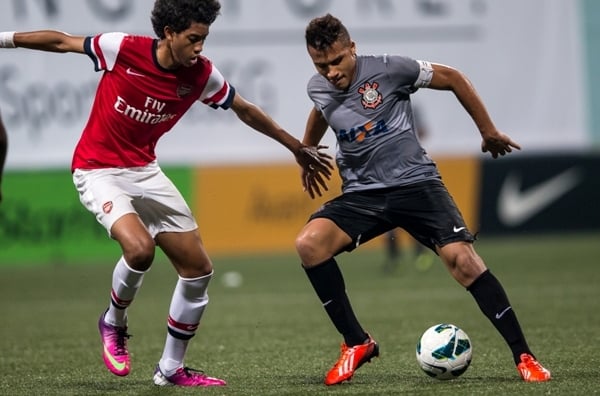Playing Positions in Football
Playing Positions in Football
A football team is typically made up of 11 members: 1 goalkeeper and 10 outfield players who take on defensive, midfield and attacking positions.

Goalkeeper
- Unlike other players on the field, goalkeepers do not change positions or occupy large stretches of the field.
- Goalkeepers usually stay within the penalty area.
- Goalkeepers have to prevent balls from entering the penalty area and stop the opposing team scoring.
- They are the only players on the field allowed to use their hands.
- Goalkeepers wear gloves to protect their hands and often wear a different coloured jersey to avoid confusion with the other players

Defenders
- The role of defenders on a football team is to intercept the attacking team’s ball and make opportunities to pass the ball to their own team mates.
Centre back
- Centre back defenders stop opposing players striking, and get attacking balls out of the team's penalty area.
- Centre backs need to be able to tackle well. These players also need to have an intelligent grasp of game play, allowing them to predict and intercept the opposing team's attack.
Sweeper
- Defending sweepers intercept the ball if an attacking team gets it over the home defense line.
- Unlike the other defensive positions, sweepers have no designated opposing team player to mark, giving them more room for maneuver.
- Sweepers must possess the ability to read and predict game play.
Full back
- Defending full backs aim to protect the center backs from attack.
- Full backs usually prevent attacks from opposing wings.
Wing back
- Defending wing backs occupy the outer areas of the field.
- Wing backs place heavy emphasis on attack (despite being a defensive position).
- Wing backs need a huge amount of stamina and will typically race up and down the field. Wing backs have the most physically demanding role in football.
- Good wing backs possess superior intercepting skills.
- Midfielders occupy the central portion of the field. They are positioned between attack and defense. Their job is to gain possession of the ball and determine the direction of play.
Central midfielders
- Centre midfielders fight for control of the ball.
- Of all the players, centre midfielders have the best vantage of the whole game.
- Good centre midfielders are skilled in understanding and interpreting game strategies.
Defensive midfielders
- Defensive midfielders are positioned in front of the defenders, and screen opposing defense by tackling the other team.
- They put players against the opposing striker.
- Defending midfielders also focus on any strong attacking player from the opposing team.
- Defensive midfielders need to be able to accurately assess the game and make selves available to carry through their teams direction of play, as well as intercept and disrupt the opposition’s.
Attacking midfielders
- Attacking midfielders are usually positioned behind the striker in the midfield section.
- ttacking midfielders are tasked to create opportunities for their team to strike.
Wide midfielders
- Wide midfielders are positioned in the outer sections of the field.
- They act to give width to the midfield section, which can be used for tactical passing or to advance the direction of play.
Attackers
- These players are stationed near the goal. All attacking positions will attempt to score goals. The combination of positions can be used tactically to create the best pattern of players and skillsets to achieve a goal.
Center forwards
- Also known as the strikers, centre forward attackers' sole task is to score goals.
- Successful strikers make the most of their talents: pace is important, as is strength and power. Ball control and aim are critical.
- Skillful strikers possess quick thinking and the ability to fool opposing players about direction of play.
Second strikers
- The players behind the striker have a vital role of providing a buffer for the striker.
- These players are the striker’s “wing men”.
- Second strikers need to have excellent perception and be very quick off the mark.
Winger attackers
- More typically considered part of midfield, attacking wingers occupy the outer sections of the field.
- Speed is important to wingers. If they are able to intercept the ball, they can have a powerful impact on play by racing down the sidelines.
To receive the latest updates on the happenings in the Singapore sports scene, or to find out more about some of the latest programmes on offer at ActiveSG, like our Facebook page here.
Interested in football and want to hone your skills with the best? Or perhaps you are a parent wishing to expose your child to the beautiful game?
If your answer to either of the above is yes, then ActiveSG Football Academy is the place for you to be at. Led by former Singapore international Aleksandar Duric, and five head coaches with experience from the highest level of football in Singapore: Richard Bok, Robin Chitrakar, Hyrizan Jufri, Mohamad Hairil Amin, Isa Halim, and Steven Tan, ActiveSG Football Academy has a holistic football programme designed to build character and impart the right skills while encouraging trainees to pursue their sporting passion with the right attitude.
To find out more or sign up for the academy, visit this link here.






![ActiveSG Academies and Clubs Logo (Solid Colour)[8647]](https://www.activesgcircle.gov.sg/hs-fs/hubfs/ActiveSG%20Circle%202023Theme/images/ActiveSG%20Academies%20and%20Clubs%20Logo%20(Solid%20Colour)%5B8647%5D.png?width=150&height=65&name=ActiveSG%20Academies%20and%20Clubs%20Logo%20(Solid%20Colour)%5B8647%5D.png)



-01.png?width=200&height=141&name=Team%20Singapore%20Logo%20(Red)-01.png)





